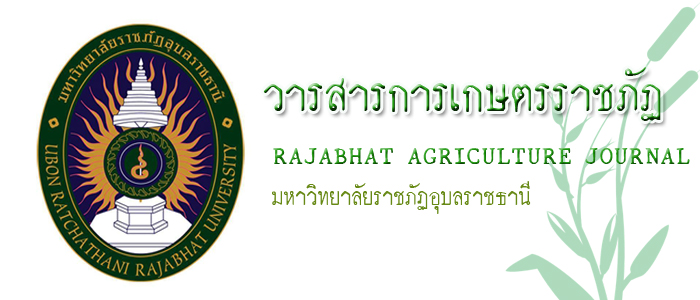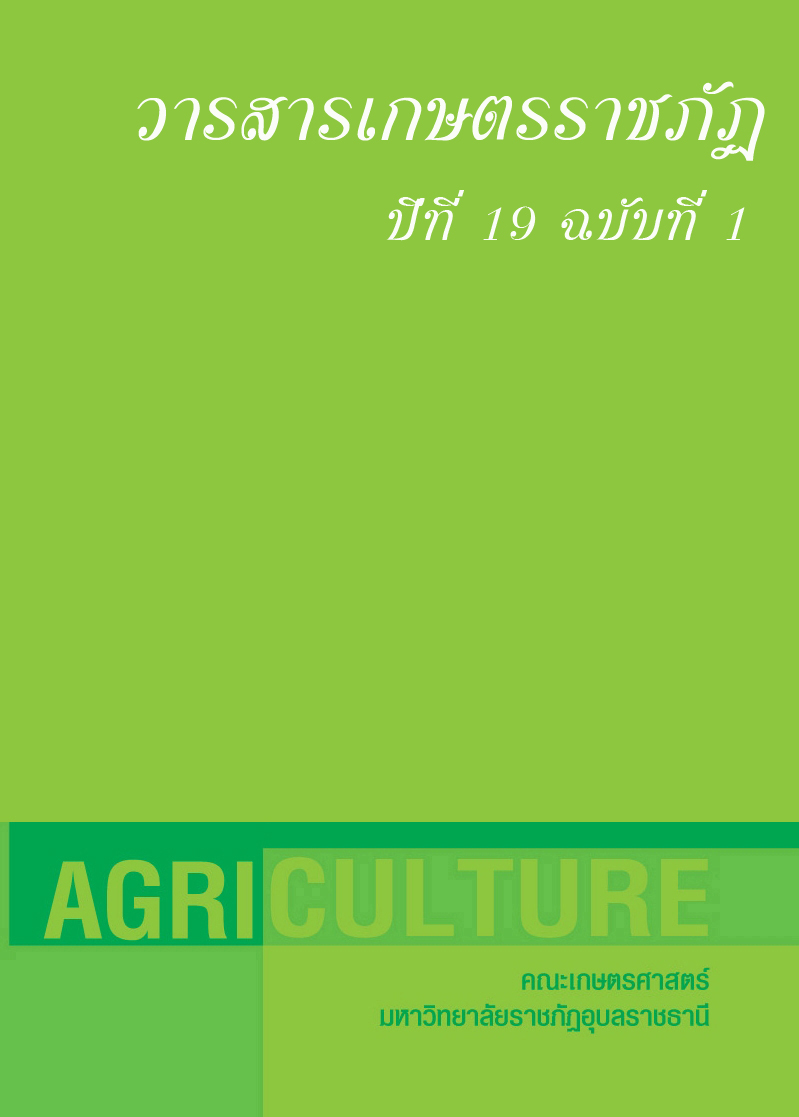
การผลิตเครื่องดื่มปลายข้าวกล้องหอมมะลิแดงผสมถั่วเขียว โดยใช้สารให้ความหวานซูคราโลส

การผลิตเครื่องดื่มปลายข้าวกล้องหอมมะลิแดงผสมถั่วเขียว โดยใช้สารให้ความหวานซูคราโลส
Production of Beverage from Red Jasmine Brown Broken Rice Mixed with Mung Bean by Using Sucralose
--------------------------------------------
โดย ณัฐวรรณ แก่นไม้หอม มนตรา ศรีษะแย้ม เอกภพ จันทร์สุคนธ์ และ อรุณลักษณ์ โชตินาครินทร์
ประเภท : บทความวิจัย
ปีที่ตีพิมพ์ : วารสารเกษตรราชภัฏ ปีที่ 19 ฉบับที่ 1
ผู้เข้าชม 0
วันที่ปรับปรุงข้อมูล : 2020-11-03 14:35:54
บทคัดย่อ
งานวิจัยนี้มีวัตถุประสงค์เพื่อศึกษาอัตราส่วนที่เหมาะสมในการผลิตเครื่องดื่มจากปลายข้าวกล้องหอมมะลิแดงผสมถั่วเขียวและศึกษาปริมาณซูคราโลสที่เหมาะสม โดยศึกษาปริมาณปลายข้าวกล้องหอมมะลิแดงผสมกับถั่วเขียวในอัตราส่วน 100:0 75:25 และ 50:50 จากผลการทดสอบคุณภาพทางประสาทสัมผัสพบว่าผู้บริโภคให้การยอมรับเครื่องดื่มปลายข้าวกล้องหอมมะลิแดงผสมถั่วเขียวในอัตราส่วน 75:25 มากที่สุด (p<0.05) จึงเลือกสูตรนี้มาพัฒนาต่อโดยศึกษาปริมาณซูคราโลสร้อยละ 0.085 0.168 และ 0.335 ของน้ำหนักน้ำตาลซูโครสเปรียบเทียบกับสูตรที่มีการเติมน้ำตาลซูโครส (สูตรควบคุม) จากการทดสอบคุณภาพทางประสาทสัมผัสพบว่าผู้บริโภคให้การยอมรับเครื่องดื่มปลายข้าวกล้องหอมมะลิแดงผสมถั่วเขียวที่เติมซูคราโลสร้อยละ 0.168 มากที่สุด (p<0.05) การเติมซูคราโลสที่ระดับต่าง ๆ ไม่ส่งผลให้ค่าความเป็นกรด-ด่างของเครื่องดื่มปลายข้าวกล้องหอมมะลิแดงผสมถั่วเขียวแตกต่างจากสูตรควบคุม (p>0.05) แต่ทำให้ค่า L* เพิ่มขึ้น ขณะที่ค่า a* และ b* ลดลงเมื่อเปรียบเทียบกับสูตรควบคุม (p<0.05) ในด้านคุณค่าทางโภชนาการพบว่าเครื่องดื่มจากปลายข้าวกล้องหอมมะลิแดงผสมถั่วเขียวที่เติมซูคราโลส ร้อยละ 0.168 มีปริมาณโปรตีน ความชื้น เถ้า ไขมัน เส้นใย และคาร์โบไฮเดรตร้อยละ 0.10 94.37 0.52 0.01 0.36 และ 4.64 ตามลำดับ มีฤทธิ์ต้านอนุมูลอิสระร้อยละ 65.82 และ 1.31 µmol Fe2+ เมื่อทดสอบด้วยวิธี DPPH และ FRAP ตามลำดับ และมีปริมาณจุลินทรีย์ทั้งหมด ยีสต์และรา อยู่ในเกณฑ์มาตรฐานผลิตภัณฑ์ชุมชน คำสำคัญ: ปลายข้าวกล้องหอมมะลิแดง ถั่วเขียว ซูคราโลส การต้านอนุมูลอิสระ
